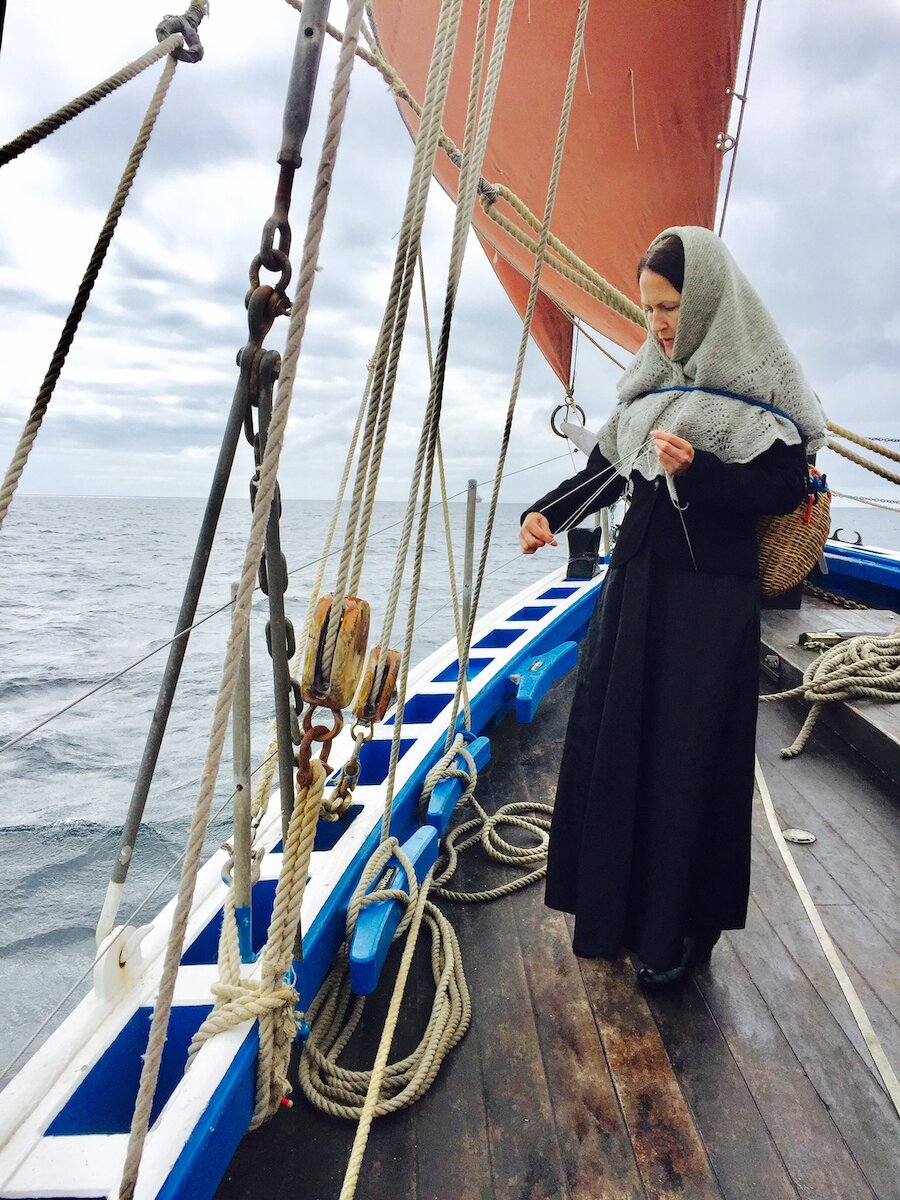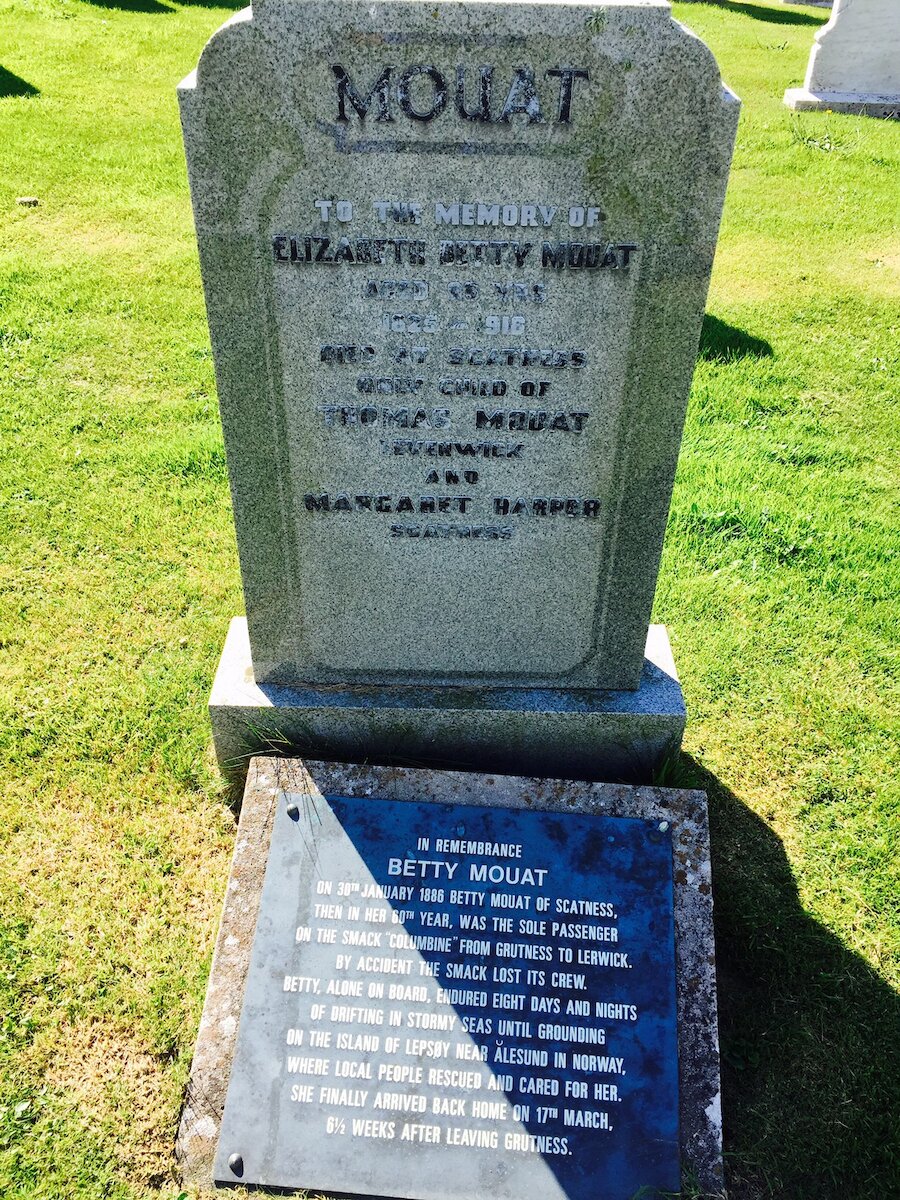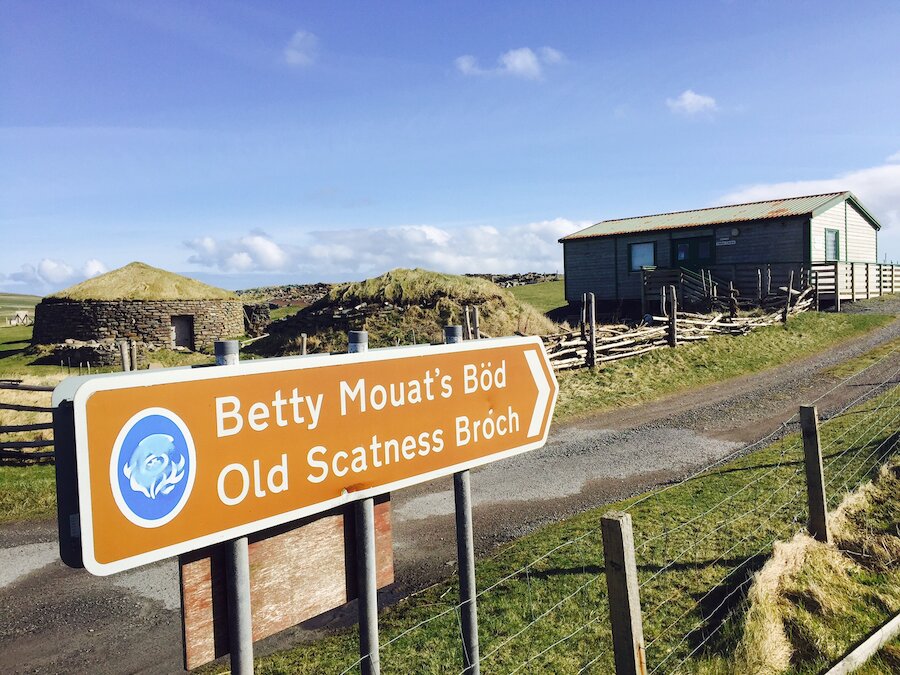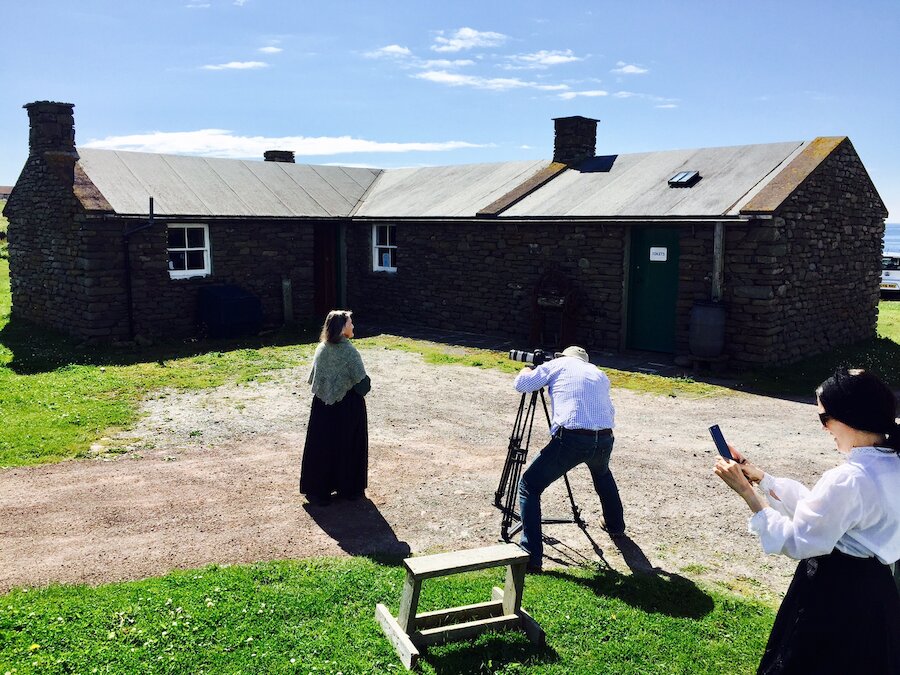Claire White is a fiddler and singer-songwriter from Shetland. She has toured the world performing music, and is a proud ambassador for the Shetland fiddle tradition. Her most recent album, Lasses Trust in Providence, is a collection of ninth to twenty-first century women's tales, celebrating the 'She' in Shetland. We asked Claire to share some of these inspirational stories with us. In the first blog post of a three-part series Claire tells the incredible story of Betty Mouat and explains how she's celebrated her heroine in song and film.
Step back in time 133 years and picture the scene. It’s the 30th of January 1886 and a frail sixty-year-old Betty Mouat is boarding a fifty foot smack, the Columbine, at Grutness pier in the south Shetland mainland. Betty is bound for the capital town of Lerwick where she plans to sell knitwear. The weather is threatening but it doesn’t deter the three-man crew and their sole passenger from embarking on a three hour, twenty-four mile voyage. Betty is escorted to the ship’s small cabin where she settles in for the journey.




